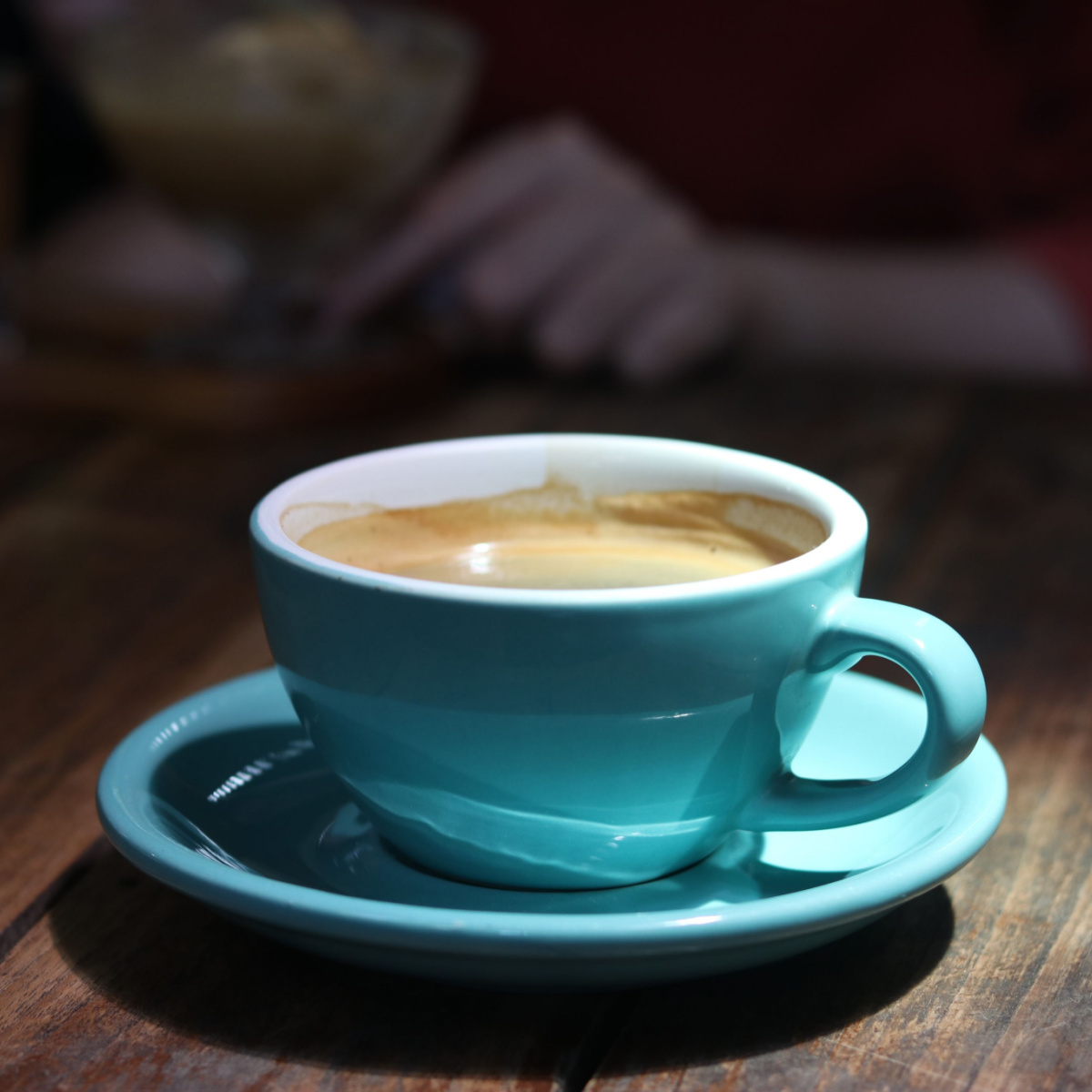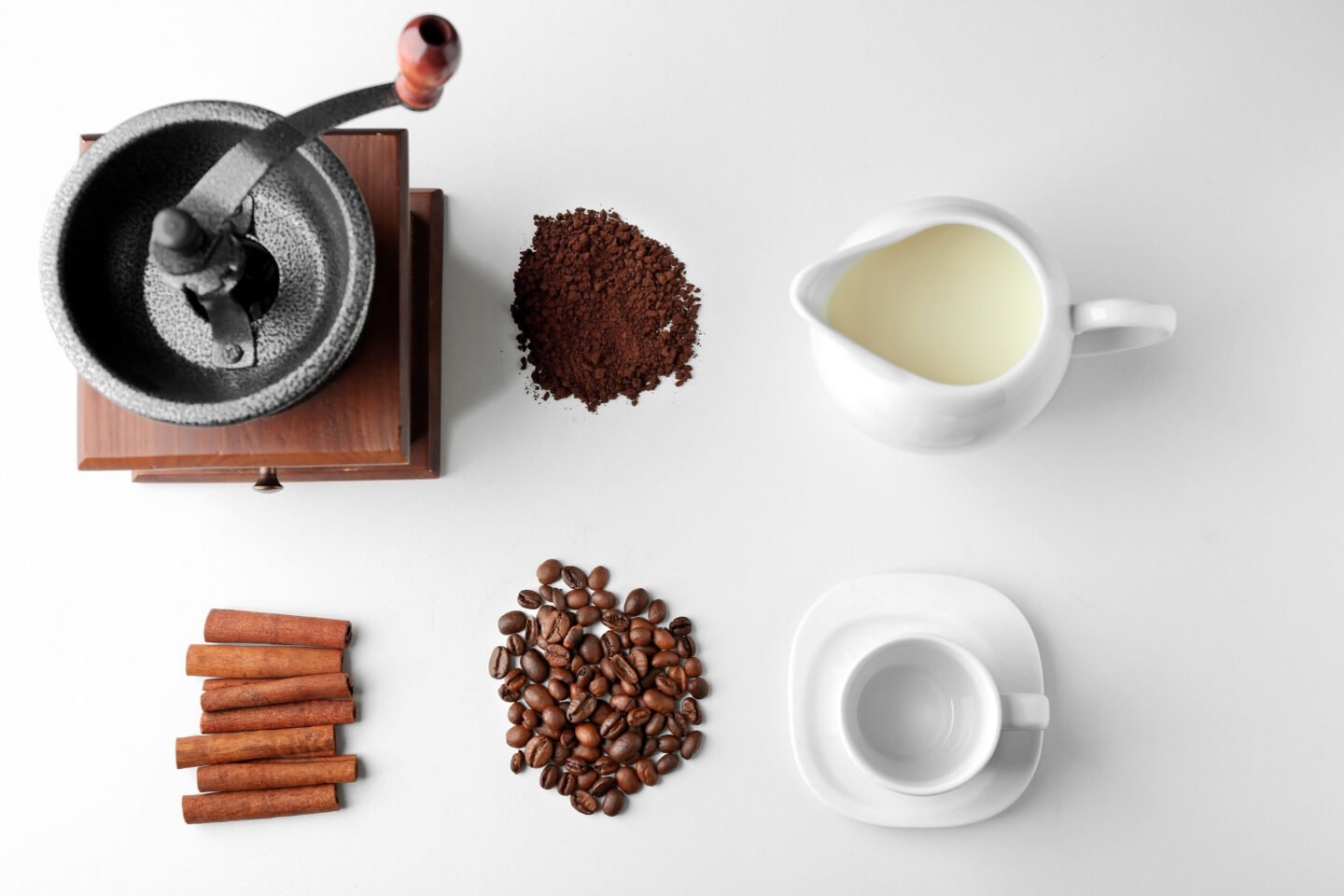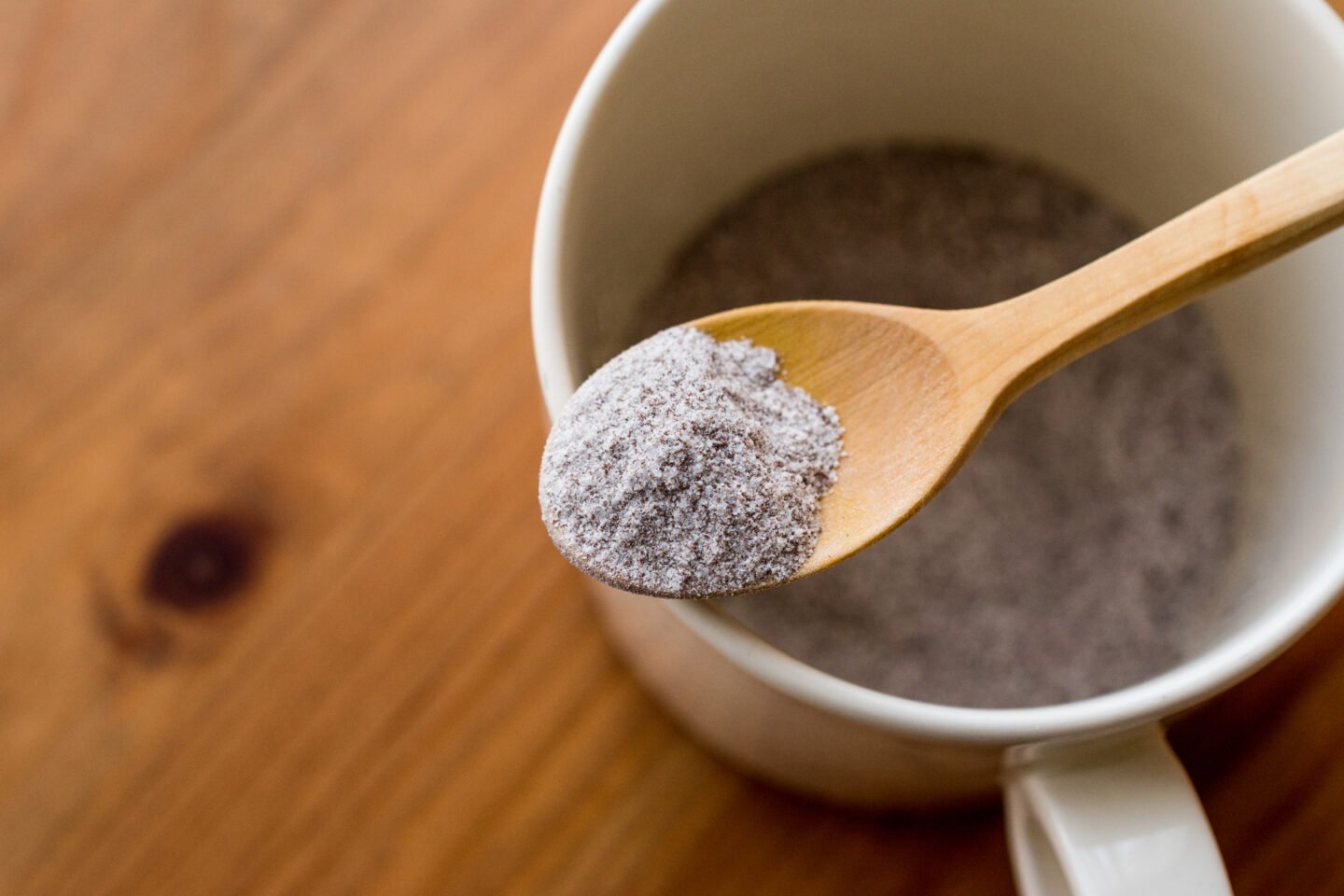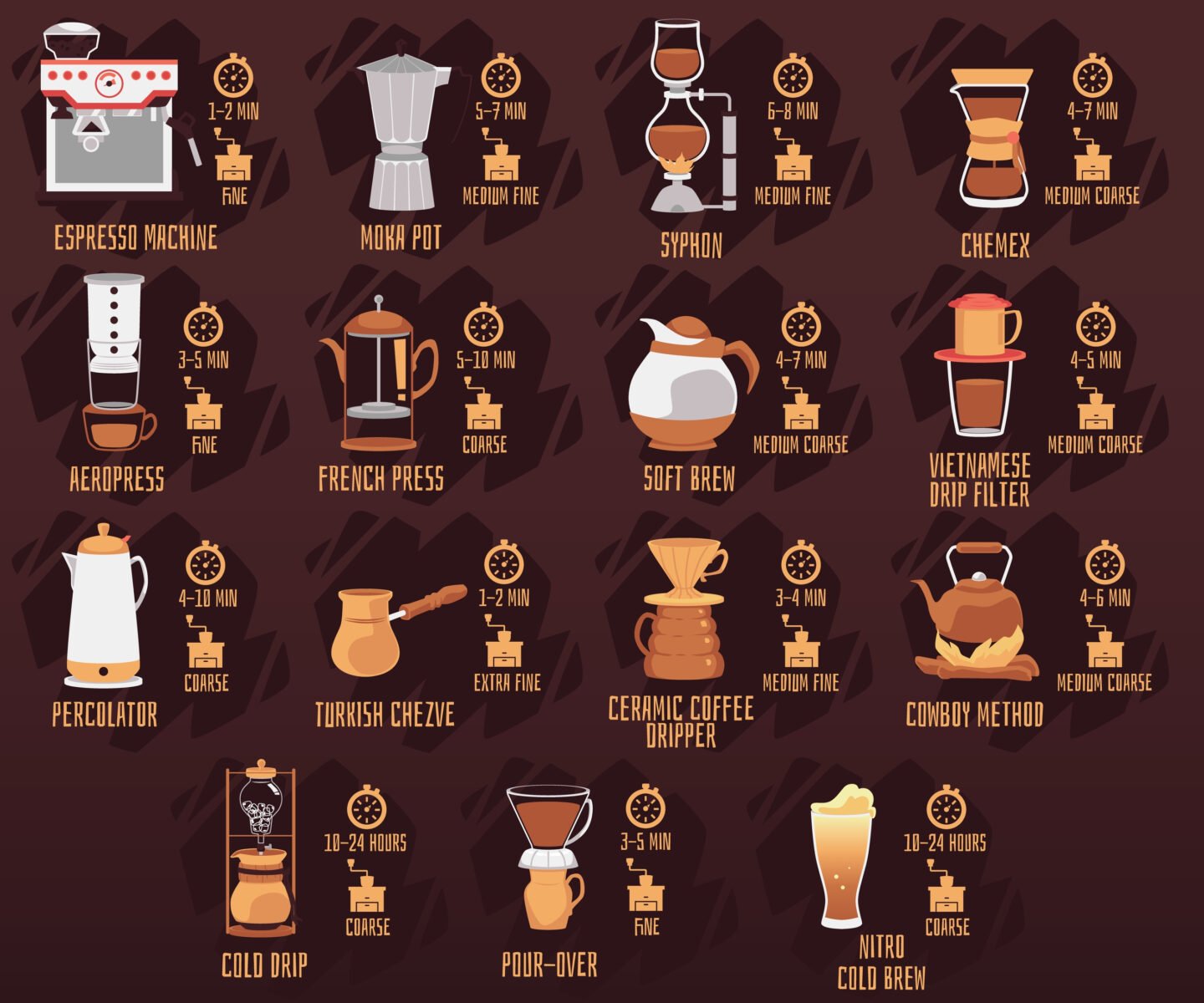Brewing coffee in milk instead of water might sound strange, but it makes sense, as most coffee drinkers use milk or cream to flavor their coffee.

The best way to brew coffee in milk is to use a method that directly immerses the ground coffee in the milk, such as the French Press or a cold brew. These methods will produce a richer and nuttier cup of coffee. The milk fats will weaken the taste of the coffee, so adding more coffee than usual is advisable.
Brewing coffee in milk with a drip coffee maker can ruin the machine because the milk will burn, and the filter can clog. Similarly, the milk can clog the filter if you use a pour-over.
Table of Contents
Brewed Coffee With Milk
Brewed coffee in milk is called café au lait. In Europe, the café au lait is made by adding steamed milk to espresso following a 1:1 ratio. In America, café au lait is prepared by adding steamed milk to concentrated coffee.
Café au lait is often confused with a latte. However, lattes are prepared with espresso, steamed milk, and foamed milk, while café au lait is prepared with only steamed milk and has no foam. Additionally, you can adjust the flavor of the café au lait by choosing different roasts.
Café au lait has a more robust profile because it has less milk than a latte. It is a rich, bold coffee drink prepared in a French press or a manual drip method.
Milk is the most common additive to coffee because it cuts the bitterness and adds a rich and creamy flavor to the brew. Because milk adds such depth to the coffee, it is recommended to add more or stronger coffee beans than usual. Doing so will add a perfect balance to the brew.
Can Coffee be Brewed in Milk?

Yes, coffee can be brewed in milk, but only manually. Milk cannot be used as a water substitute in electric pots or espresso machines because the milk will damage the machine. Manual brewing methods, such as French press, pour-over, and Aeropress, are the best.
The optimum temperature for coffee is between 195 degrees Fahrenheit and 205 degrees Fahrenheit. If milk is heated to these temperatures, it will burn, and its nutrition and flavor will change. Milk can only be heated to a maximum temperature of 160 degrees Fahrenheit without curdling.
How to Brew Coffee in Milk Using a French Press
The first step in the brewing method is to heat the milk in a microwave or saucepan. Use ¾ of a coffee mug of milk for a standard-size French Press or ½ mug for a 3-cup Press. The temperature should be checked every 20 seconds with a thermometer to ensure the milk doesn’t burn.
Next, add medium ground coffee to the French Press at a ratio of three tablespoons per one cup of milk. Generally, coarser grounds are used for a French press. However, hot milk will weaken the flavor. For a robust flavor, use finer grounds.
Next, pour the milk over the grounds and stir with a spoon. Stirring the milk ensures that all the grounds are saturated. Let the mixture steep for four minutes. After four minutes, press the plunger down, pour the delicious brew into your cup, and enjoy!
Can You Make Instant Coffee With Milk instead of Water?
What about instant coffee being brewed in milk instead of water? The short answer is yes. You can brew instant coffee in milk. However, brewing instant coffee in milk instead of water will change the flavor of the brewed coffee.
Water does not contain solid components, so soluble components dissolve faster. Since water has no flavor or aroma, it does not change the taste of instant coffee. Water also contains no calories, which is important to consider when brewing with milk or water.

Brewing instant coffee with milk is considerably different than brewing coffee in water. Milk contains fat and sugar, which slows down the brewing process. Furthermore, the milk's color, taste, and smell will affect the coffee.
Coffee brewed in milk will have a more bland flavor, so we recommend adding more instant coffee when brewing with milk than water. Since milk masks the taste of instant coffee, it will also mask the bitterness from adding more coffee.
Water
- Instant coffee dissolves quickly
- Water preserves the smell and flavor of the coffee
- Zero calories
Milk
- Latte flavor and aroma
- Masks the bitterness of coffee
- Coffee does not gain an acidic taste as it cools
Different Ways to Enjoy Milk With Coffee
Generally, a splash of milk is added to coffee as a creamer, and larger volumes of milk are used in specialty coffees. The intense flavor of espresso pairs well with milk because of the contrast between the dark roasted beans and the sweetness of the milk.
Dairy milk isn’t the only milk that makes delicious coffee blends: soy, almond, and coconut milk also add a unique flavor to a cup.
Lattes are the most common example of milk and coffee and are made with ⅓ espresso and ⅔ milk. This specialty coffee is known for its smooth, creamy texture and flavor.
Brew Methods

1) Drip Machine
You should never add milk to a drip machine because it will ruin it. The milk will burn, creating a nasty, sticky coating on the drip machine.
2) Pour Over
Brewing milk with a pour-over coffee machine depends on the setup. If the pour-over machine has a paper filter, the fats in the milk will clog it. Some pour-over machines have a reusable mesh filter that works well with thicker liquids like milk.
3) French Press
The French Press is the best way to brew rich, creamy coffee without bitterness. As with the pour-over, the filter will get clogged unless cleaned after each use.
4) Moka Pot
Brewing coffee in milk is not recommended in a Moka pot because of the temperature. Boiling milk in a stovetop espresso maker will ruin the coffee and the pot. As stated above, milk should only be heated to a maximum temperature of 160 degrees Fahrenheit.
Moka pots boil the coffee, which is not recommended for milk. Instead, boil the coffee and add steamed milk to the coffee.
5) Cold Brew
Cold brew is the best way to enjoy coffee brewed with milk. Medium or dark roasted beans are the best as they will allow some coffee flavor to surface. Add a 1:4 coffee-to-milk ratio for the most flavor. The cold brew should steep for 12-18 hours in the fridge before serving.
Once the steeping process is over, you should strain the coffee beans over a cheesecloth.

Leave a Reply